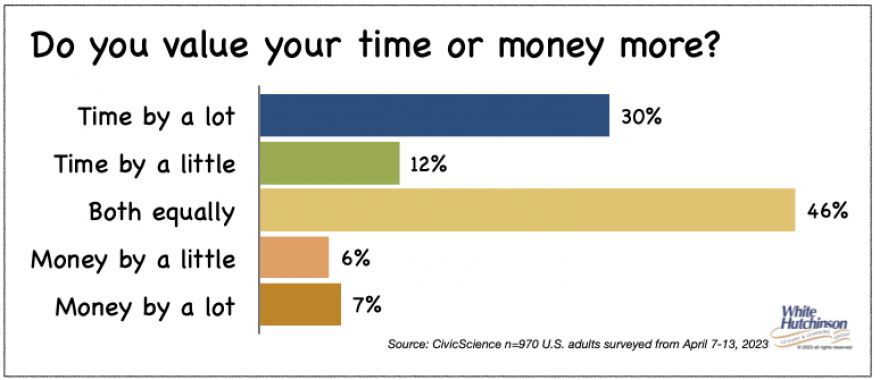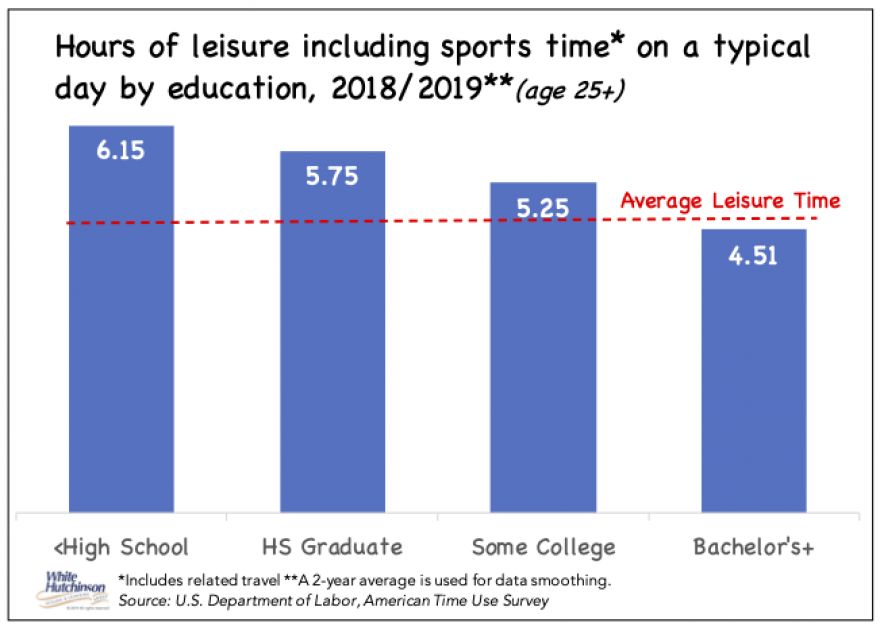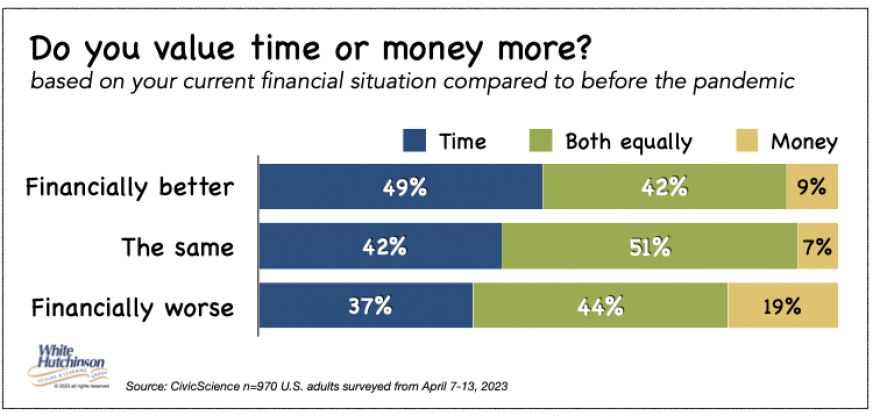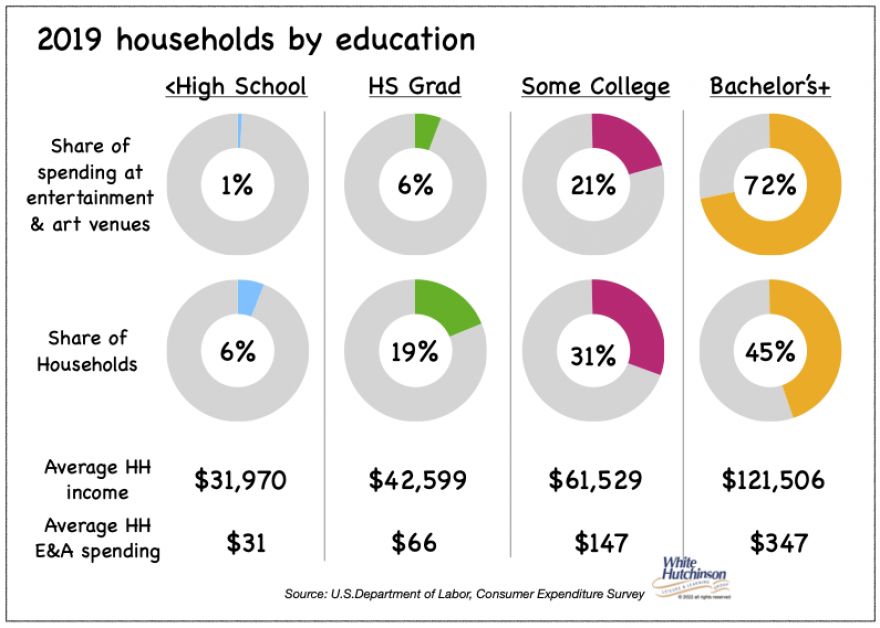
Vol. I, No. 3, May 2023
Understanding the money value of time on your farm
Time is more valuable than money. You can get more money, but you cannot get more time.
We only have so much time, 24 hours a day, 7 days a week. When it comes to disposable leisure time, it's far less, on average, 5 hours, 10 minutes a day. Since time is limited, people don't want to waste it but rather use it wisely.
As we discussed in last issue's article, Taking value added agriculture to its highest level, goods and services are about time well saved, allowing a person to free up their time for other things. Instead of spending time making an apple pie, you buy it at the farm market and save time. Instead of preparing dinner at home, you visit a restaurant and order a slice of apple pie for dessert. Unlike goods and services, experiences are about time well spent.
When choosing what out-of-home (OOH) entertainment and leisure attractions to visit, people's time well spent at some venues is more valuable than at others. One way to measure that value is the 'money value of time' (MTV). MTV recognizes that the amount of money customers will pay for an OOH commercial experience is directly proportional to the value they receive from the time they spend there.
This has three implications:
- If there is no charge for the time, people will naturally assume that the offering is probably not worth experiencing.
- The more time well spent, the more money customers should be willing to pay.
- MTV allows an experience charging a fee to measure itself against other experiences using the MTV scale of expenditure per minute.
A movie at your local cinema usually lasts about 2 hours, and the ticket costs $12. We value the time watching the movie at 10 cents a minute. But if it is a blockbuster film and we see it on an IMAX screen, the ticket might cost $15, or 12.5 cents a minute. We consider the IMAX movie a better experience and will pay a higher MTV for it.
Disney parks are around 20-25 cents per minute, which is considered a high-quality experience.
Now let's look at the MTV of a go-kart ride. The ride might cost $6 and only takes about 5 minutes. But we likely must stand in a queue or wait in the pit to ride for maybe 15 minutes. Assuming the total experience takes 20 minutes, MTV works out to 30 cents a minute.
But escape rooms have an even higher MTV of around 50 cents per minute.
If the go-karts are located at a location-based entertainment venue (LBE), such as a family entertainment center with other attractions, MTV for visiting the venue would be the total of all fees and admissions divided by the length-of-stay in minutes (not counting any time spent eating in its restaurant). If that was $25 and the length-of-stay was 1.5 hours, then MTV would be 28 cents per minute.
An agritourism farm festival might have an admission fee of $20 with an average length-of-stay of 4 hours. The MTV would be 8.3 cents per minute, far less than visiting a cinema, but indeed a far better experience than sitting in a dark theater where you can't even socialize with family or friends while watching the movie. That's a problem we constantly see with agritourism facilities. Most are undervaluing the MTV of what they offer. Think about it. It's an outdoor activity that almost everyone loves. It's unique and seasonal. You can enjoy doing so many things with family or friends. And the food is far better and more reasonable than at a movie theater. We believe agritourism festivals should be priced at no less than an MTV of 12 cents per minute and many closer to 15 cents per minute, considering what alternative entertainment venues change. For an average 4-hour length-of-stay, admission should be between $28 and $36.
Actual MTV would include the total per capita cost of attending, including food and beverage, retail, and any parking fees. However, these are generally not publicly available for comparison purposes with other attractions, so we are using the strictly admission and event fee costs.
Americans generally say their time is either more or equally important as money, according to CivicScience's poll last month. Four-in-10 Americans (42%) value time over money, while 46% value it equally. A small minority value money more (13%).

To increase revenues, agritourism festivals might consider expanding the length-of-stay assuming they could maintain the same MTV for the lengthened experience. The problem with this might be that the length-of-stay could deter attending. People might be willing to attend a 4-hour experience (remember that doesn't include the time traveling to and from the event), but a 5-hour experience with the travel time might not fit into their schedule. Another problem with expanding length-of-stay is it increases the number of parking spaces needed as people aren't leaving and freeing up parking spaces as often for new arrivals.
The best way to increase revenues is to increase the MTV of the experience and raise prices. This requires raising the fidelity of the experience and improving its quality and uniqueness. When you raise MTV, you also create a competitive advantage over other options.
An aspect of MTV that is often overlooked is that the money value of time is greater for higher socioeconomic people than lower socioeconomic. The reason is that people in higher socioeconomic households have the least leisure time (74 minutes less a day than a high school graduate), meaning that time well spent is even more valued by them as they definitely want to avoid wasting it since they have so little.

A CivicScience poll last month found that the pandemic increased the value of time for many people. Three in ten Americans now say that time is more important than before the pandemic (30%), while fewer say that money is more important (13%). For 57%, their values have stayed the same from pre-pandemic years.
Nearly half of those who are now financially better off than before the pandemic (49%) and 42% who are financially the same say time is now more important to them. Even over one-third of those worse off financially (37%) say time is now more important to them. The wealthier people are, the more they value time over money.

Higher socioeconomic households with their higher incomes can afford to pay the higher MTV for high-fidelity experiences. And with time so valuable to them, they will seek out higher MTV experiences to ensure their time is well spent and not wasted. They are the prime market for out-of-home OOH leisure and entertainment. Using pre-pandemic data, nearly three-quarters of all spending on OOH entertainment and art venue fees and admissions (71%) was by households with a person with a bachelor's degree or higher. Their average OOH entertainment and art spending for fees and admissions was more than five times what high school graduate households spent.

The bottom line is that the largest OOH leisure and entertainment market is higher-socio-economic households who can afford and are willing to pay higher MTVs for higher fidelity experiences to ensure that their time is well spent and not wasted. With the post-pandemic increase in the importance of time over money, the higher socioeconomic household will be migrating their OOH entertainment and leisure experiences to even higher MTV venues. There is no reason why agritourism festivals shouldn't take advantage of this.
Takeaway
Profitability is not about having the largest attendance. It's about maximizing revenues. If an agritourism business raises its admission price by 20% from $25 to $30 and loses 10% of its customers, it still ends up with higher admission revenues. Targeting higher-socioeconomic customers with a high-fidelity quality experience that they will consider time well spent and charging a MTV that matches that quality, even if that means losing some lower socioeconomic customers, is the most profitable route for success.
Subscribe to Agritourism Today



